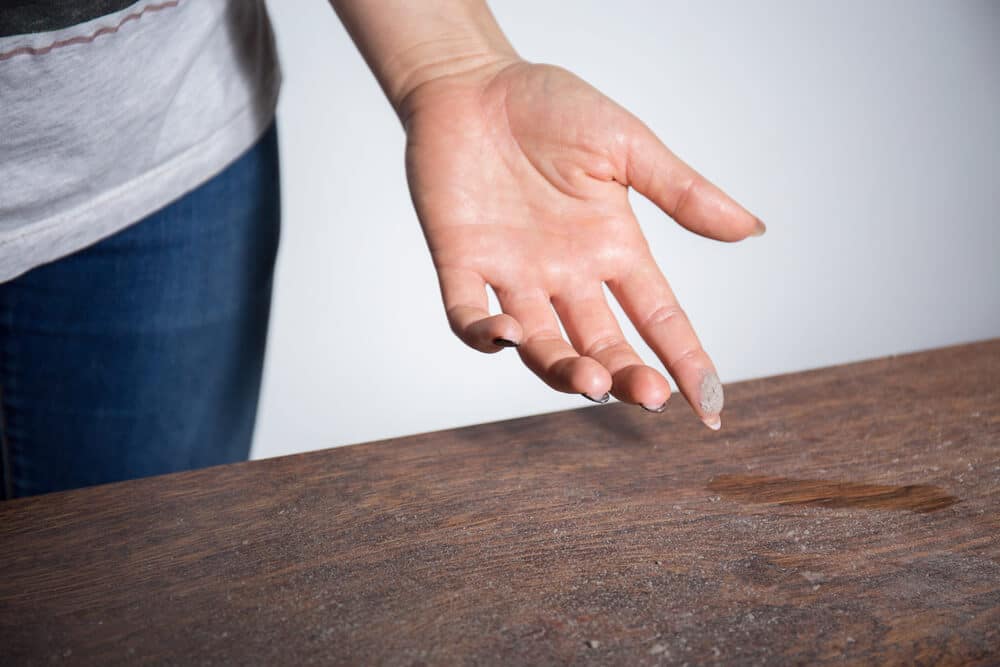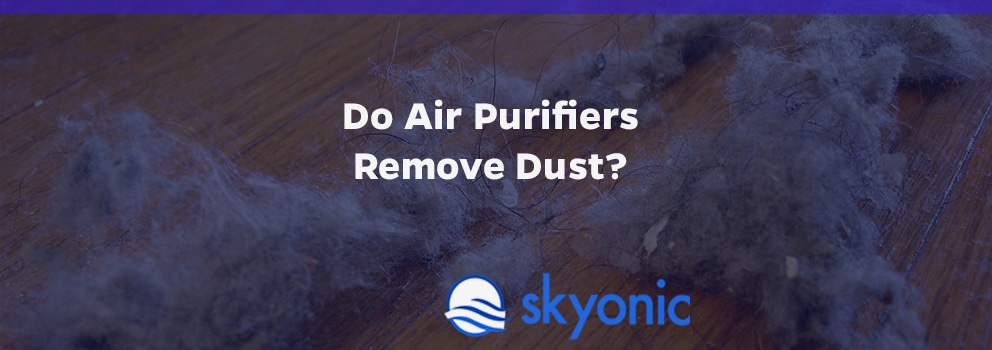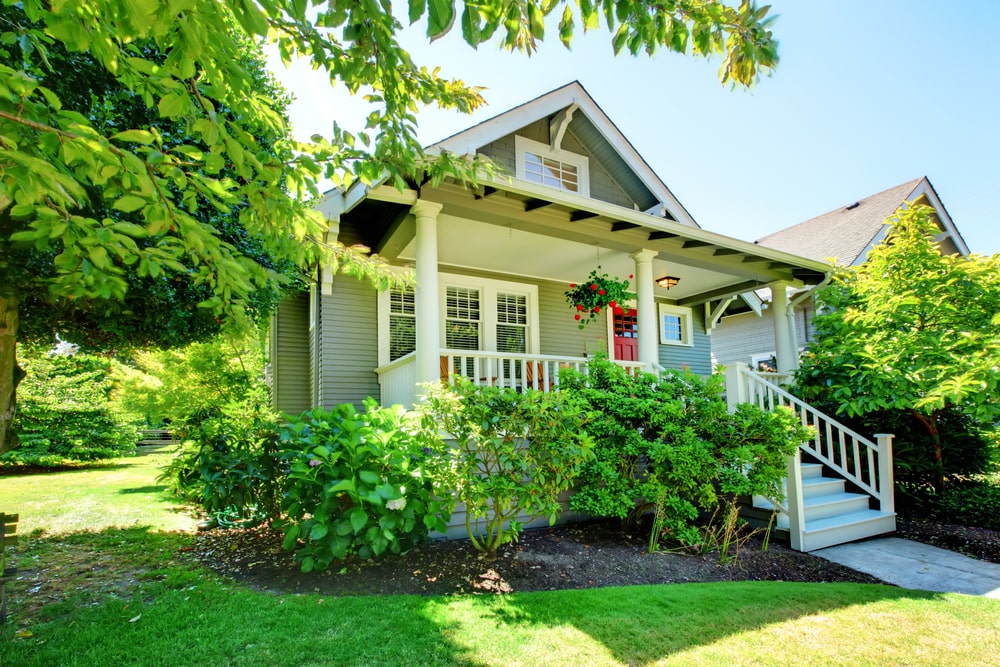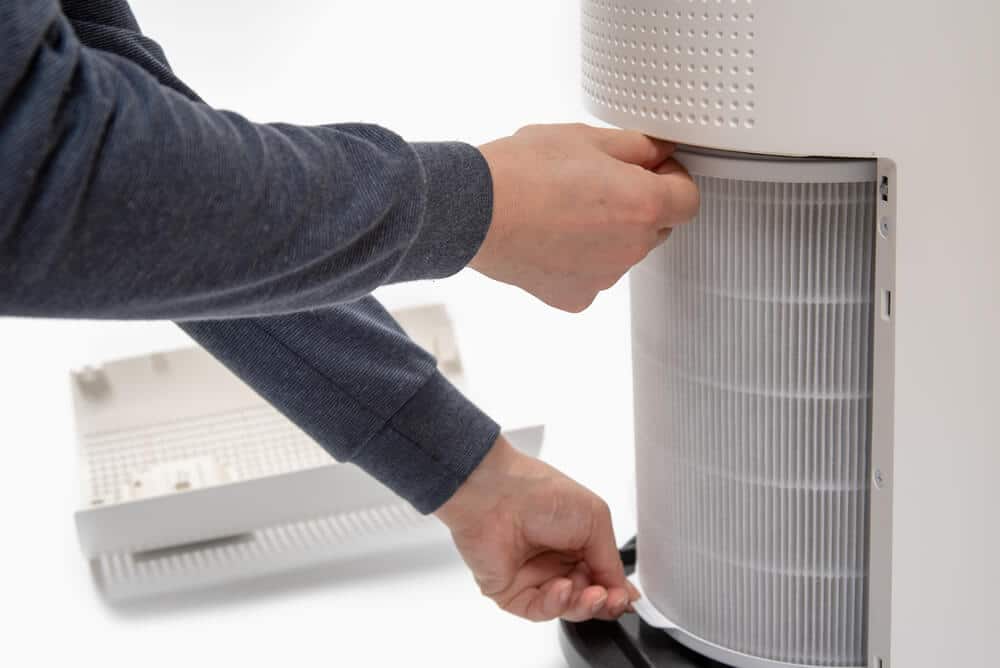Many people believe that air purifiers remove household dust. Perhaps a few people question this since dust particles are tiny particles and because sometimes, the air purifiers may be placed in large rooms. So, in this article, we will help satisfy your curiosity and provide a detailed answer to the question “do air purifiers remove dust?”
For us to properly do this, we have to discuss dust and air purifiers. We also have to look at what air purifiers are best for removing dust if any air purifiers are capable of removing dust particles from large rooms and by so doing, improving air quality.
What is Dust?
Dust is made up of solid particles of various matter forms which may include soil, pollen, human hair, skin cells, pet hair, and several pollutant particles. Many people think that dust is made up almost seclusively of dead or worn-out human cells but this is not true. Yes, human body cells make up a portion of dust in your home and my home but it is not the major constituent of dust. You are more likely to have larger portions of dust from outside soil conveyed by the wind, from dust mites, mold spores, insect-byproducts, and several other sources.
Some dust particles, especially from pollens, mold spores, or such organic particles are less likely to harm you unless you already have a medical condition that makes you allergic or if you are asthmatic. Since dust particles are airborne particles, they are likely to be harmful to people who suffer from allergy symptoms. This is often without warning due to the fact that dust is particulate matter. So, besides the fact that dust settles on the floor and things around the house, making them dirty and unhygienic, you also have to deal with the health effects of dust in the living room, large rooms, and in your home in general.
Dust can affect your respiratory system, triggering health problems. So, it is important to have clean air free of pet dander, mold spores, dust mites, cigarette smoke, and various forms of allergens in your living room and in indoor spaces. This is why air purifiers are important. Air purifiers help in improving air quality by making use of a filtration system to remove indoor dust and produce fresh air for you to breathe. Or do they? We will now look at air purifiers to see if they do this and how they do this- how air purifiers work to remove dust and improve air quality.
How Air Purifiers Can Help Combat Dust
Air purifiers are called air purifiers because they simply purify air to a large extent.
They are devices that help remove mold spores, pet dander, dust particles, and a host of other airborne particles or allergens from indoor air.
They do this by using a filtration system that works to clean air and improve indoor air quality. You need to understand that most of these particles we speak of cannot be seen by the naked human eye. They are so small that they are measured in microns. 1 micron for instance is one part out of a million parts. Yet, some of these particles are smaller than even 0.3microns. Keep in mind that the different particles that make up dust could range from as small as 0.01microns to over 400microns
Air purifiers work in different ways depending on the type of air purifier.
We will now discuss two of the most common types of air purifiers before giving you our verdict on which air purifier is the right air purifier or the most effective at removing dust particles and other airborne particles too.
This will guide you in choosing air purifiers, especially if you are looking for the best air purifiers for dust removal.

Types of Air Purifiers to Remove Dust
Ionizers
Ionizers are also known as ionic air purifiers. They purify the air by passing air through a filtration system that utilizes negatively charged ions to bond to the particles in the air, making them heavier and causing them to drop on the charged collection plate in the air purifier. In this way, ionizers select particles from the air. Ionizers are effective in removing particles from the air and in deactivating germs with their negatively charged ions. However, they are not as good as HEPA air purifiers when it comes to removing particles. They also don’t do anything about the smell in the room.
People are however cautious of Ionizers because of the ozone they produce as by-products. Ozone generators which are an entirely different device make use of ozone in an attempt to eradicate airborne particles. However, it produces a large and unhealthy level of ozone which is really harmful to homeowners and it also does not have collection plates to collect the particles that the ozone binds to, ensuring that the particles are on the floor and can be destabilized into the atmosphere again. Unfortunately, many ozone generator producers pass them off as ionizers, giving ionizers a bad name. Since ionizers produce ozone as by-products, people are skeptical of Ionizers even though the ozone generated is in very little and very safe quantities. So, yes. Ionizers can remove dust from the air. You will have to keep up regular maintenance by regularly cleaning the collection plate though.
HEPA air purifiers
High-efficiency-particulate air purifiers (HEPA air purifiers) is the known best air purifier for dust removal and for removing airborne particles in general. It is built with a technology that ensures that it traps most airborne particles. HEPA air purifiers make use of air filters called HEPA air filters as their filtration system tools. There are two types of HEPA air filters.
True HEPA filter: This is the most efficient filter type. They capture or trap any particle as big as 0.3microns or more. There is a rigorous process used in certifying true HEPA filters to ensure that they meet up with the accepted 99.97% efficiency when it comes to purifying indoor air. This is the best-known air purifier for dust removal.
HEPA-type filter: this is s less effective HEPA filter. It is effective for up to 95%. It is also great or cleaning air and trapping particles but obviously not as good as the True HEPA air purifier.
HEPA air purifiers have to be maintained regularly as well. Maintenance includes filter replacements which will be done from time to time because the filters trap lots of particles and microbes which have to be done away with. When the filters get saturated and are not replaced, you may risk the filters becoming a source or reservoir of the very particles you need to get rid of. The air purifier at that point may even pose more danger than if you had not gotten it. At the end of the day, this applies to lots of devices. They have to be properly maintained so they can function effectively.
There are other air purifiers such as the activated carbon filter air purifier and the UV-C based purifiers. Sometimes, the technologies are mixed or simultaneously employed to both remove dust and to deactivate microbes that may be present in indoor air.
Conclusion
Yes, air purifiers can remove dust from indoor air. This does not mean that air purifiers can remove every single dust particle. They will remove most dust particles. Keep in mind that dust particles range from 0.01microns to about 400microns. Also, HEPA air purifiers for instance can trap anything as big as 0.3microns. Unfortunately, particles as small as 0.01microns will most likely pass through the pores in the HEPA filters. However, you can be sure that most of the particles will be trapped, and only very few can make it through. The best shot you have at purifying the air in your living room or indoor space and getting fresh air that will be free from allergens remains the HEPA air purifiers.
Some air purifiers combine the HEPA air filter technology with the Ionizer technology to ensure that microbes are also killed or deactivated. Ionizers also do a good job of removing dust and microbes from the air. There are a few other types of air purifiers but they do not work as effectively as the HEPA air purifier. So, if removing dust is your goal, we recommend the HEPA air purifier, preferably one with True HEPA filters. A notable mention for removing particles would be the activated carbon air filter which uses carbon filters to remove large particles and organic compounds by filtering them through its pore spaces. It is a good air filtration device but also not as good as the HEPA air purifier with regards to the amount of dust it can filter.






